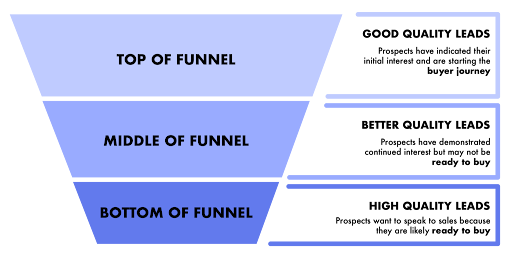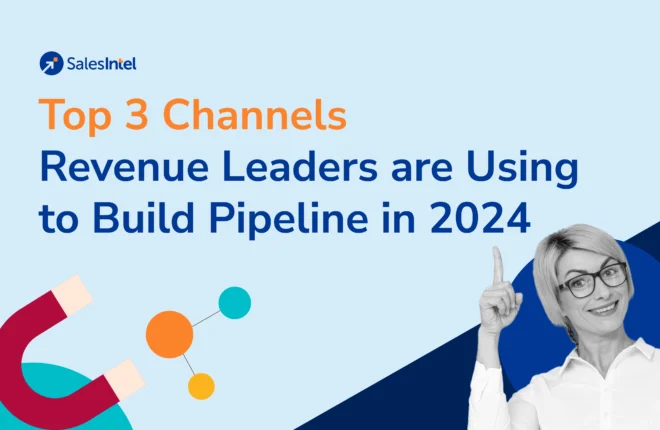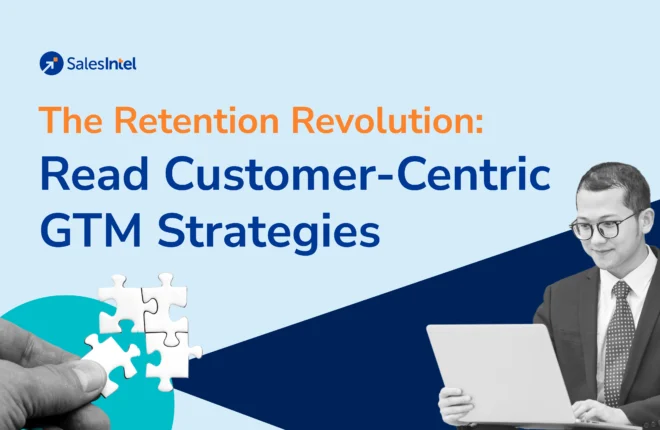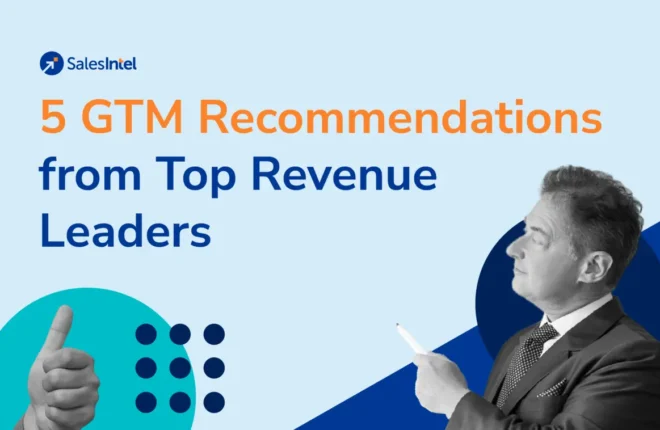Understanding and effectively managing your marketing funnel is crucial for driving growth and achieving long-term success. A well-structured B2B marketing funnel not only helps in attracting and converting high-quality leads but also ensures that your marketing efforts are targeted and efficient.
Whether you’re new to B2B marketing or looking to refine your existing strategies, this comprehensive guide will provide valuable insights to enhance your marketing efforts. In this blog, we will explore:
- The concept of the B2B marketing funnel
- Advantages of building a B2B marketing funnel
- Various stages are involved in creating and managing it
Additionally, we’ll delve into:
- Practical steps for building a funnel tailored to the B2B customer journey
- How to set goals and metrics to track success
- Strategies for prioritizing and adding more quality leads to your funnel
What is the B2B Marketing Funnel?
First, let’s clarify what a marketing funnel is and why it’s crucial for your business.
A B2B marketing funnel is a structured pathway that guides potential leads through various stages until they become loyal customers. Its primary objectives are to build brand awareness, foster loyalty, and convert prospects into high-quality leads.
The marketing funnel outlines potential customers’ journeys, highlighting the marketing activities appropriate for each stage. The B2B sales cycle is typically longer than that of consumer sales. So, this approach is vital for B2B marketing because it offers long-term sustainability.
A marketing funnel helps segment your audience, allowing for personalized messaging based on where each customer is in their buying journey. This personalization significantly increases engagement and boosts the possibility of converting the leads.
Advantages of Implementing a B2B Marketing Funnel
Implementing a B2B marketing funnel can offer several benefits, particularly for software as a service (SaaS) companies in attracting potential buyers. Here are six key advantages:
- A Greater Understanding of Your Audience
A well-structured B2B marketing funnel helps you map your ideal customer’s journey from their first interaction onwards. This insight allows you to meet your customers’ needs at every stage, ultimately reducing your customer acquisition cost (CAC).
2. Enhanced Brand Awareness
Increased brand recognition builds trust. When B2B buyers are familiar with your brand and understand your offerings, the sales cycle is shorter, conversions are quicker, and customer loyalty is enhanced.
3. Supports SEO Efforts
A B2B marketing funnel can organically drive more traffic to your website, reducing the need for expensive paid ads. This can be done by integrating multiple strategies, such as SEO optimization, high-quality content creation, and social media engagement. By focusing on search engine optimization (SEO), companies can improve their visibility on search engines, which helps potential clients discover their sites during the research phase. Creating valuable and informative content, like blog posts, white papers, and videos, attracts and educates prospects, encouraging them to visit the site for further information.
Additionally, leveraging social media platforms to share content and engage with the audience helps build brand awareness and drive traffic from these channels to the website. These strategies collectively nurture leads through the funnel, converting visitors into customersAdditionally, having a wealth of content can improve your link-building opportunities, further boosting brand awareness.
4. Increased ROI
Continuous work on your marketing campaigns can be costly, but a B2B marketing funnel opens up numerous long-term revenue opportunities. By collecting customer data, you can personalize account-based marketing (ABM) campaigns and position your brand as an industry authority, ensuring your company stays top-of-mind when customers are ready to purchase.
5. Nurtures Relationships
B2B funnel marketing is excellent for nurturing relationships and building brand loyalty. With access to prospective customers’ contact information, you can engage them through email nurturing campaigns by:
-
- Educating potential customers
- Demonstrating how your products work
- Sharing case studies
- Offering special discounts
6. Easily Measurable Performance
Implementing a B2B marketing funnel allows for easily measurable performance by utilizing specific metrics at each stage of the funnel. This structured approach helps track the effectiveness of marketing efforts from initial awareness to final conversion. Metrics for B2B websites include website traffic, lead generation rates, engagement levels, conversion rates, and customer acquisition costs provide insights into how well each stage is performing, enabling marketers to optimize strategies and enhance overall efficiency.
By understanding and implementing a B2B marketing funnel, you can create a more targeted, efficient, and successful marketing strategy that attracts potential leads and nurtures them into loyal customers.
Stages Involved in Creating a Marketing Funnel
Similar to a sales funnel, a marketing funnel has three essential stages: top-of-the-funnel (TOFU) leads, middle of the funnel (MOFU) leads, and bottom-of-the-funnel (BOFU) leads.

TOFU Leads
TOFU leads are prospects who have shown initial interest in your product or service. They are at the beginning of their buyer’s journey and consider you as a potential solution to their problems. Generating TOFU leads means they have shown interest in your brand. While they are promising leads, they still need to be qualified since you have yet to determine if they meet your criteria.
MOFU Leads
MOFU leads have demonstrated consistent interest by engaging with your content, participating in your campaigns, and interacting with marketing emails. However, they need more information before making a decision. These leads are further along in their buyer’s journey than TOFU leads but are not yet ready to buy. They require further nurturing to move them closer to a purchase decision.
BOFU Leads
BOFU leads are the ones who contribute directly to your revenue goals. They are convinced that your product or service can solve their problems and are interested in talking to sales representatives for proposals and negotiations. These leads are ready to be handed over to the sales team. This stage marks the end of the marketing funnel and the beginning of the sales funnel.
To effectively manage all three stages of your marketing funnel, it’s crucial to implement lead prioritization which we will see in detail later in this article. By scoring your leads, you can accurately push them through each stage, ensuring a smooth transition and increasing the likelihood of conversion. However, before that, let’s go through the 5 steps to build a marketing funnel based on customer journey.
How to Build a Marketing Funnel for the B2B Customer Journey
Now that you’re familiar with the stages of a B2B marketing funnel, it’s time to create your own. Here’s a step-by-step guide to help you build an effective funnel:
Step 1: Awareness
Start by driving your B2B target audience to your website. Map out the customer journey to understand what actions you want them to take when they first interact with your brand. At this TOFU stage, encourage them to sign up for your newsletter or fill out a form to receive more information. This allows you to start delivering valuable content and capturing their interest.
Step 2: Consideration
Once potential customers are aware of your brand, they will begin evaluating their options. It’s crucial to stay ahead of your competitors at this stage. Place prospects into a nurture campaign where you share valuable content such as case studies, whitepapers, and tailored email sequences that highlight why your solution is the best fit for their business.
Step 3: Action
The action stage is critical as this is where buyers decide which product to purchase. They will compare features and benefits among various brands and solutions. Your goal here is to present the best combination of features, benefits, and pricing to encourage them to choose your product. Offer demos, free trials, or detailed product comparisons to facilitate their decision-making process.
Step 4: Re-engagement
Some leads may not convert right away or might raise objections that your team couldn’t overcome initially. It’s essential to re-engage these prospects. Implement an email remarketing campaign to keep your brand on their radar and build a relationship over time. This keeps the door open for future opportunities when they’re ready to reconsider your solution.
Step 5: Retention
Retention is about maintaining relationships with your existing customers. Provide excellent customer service and keep them engaged with ongoing content. Use your inbound marketing team to share updates, tips, and additional resources. This not only helps with customer satisfaction but also opens up opportunities for upselling and gaining referrals for new business.
Setting Goals and Metrics
As with any strategy, it’s important to set clear goals and track B2B marketing funnel metrics to ensure you’re on the right path. Define these goals with your team before building your funnel, and regularly review your performance to make necessary adjustments.
By following these steps, you can create a robust B2B marketing funnel that attracts, nurtures, and retains customers effectively.
Goals and Metrics for a B2B Marketing Funnel
Setting clear goals and tracking the right metrics is crucial for the success of your B2B marketing funnel. Here are some key metrics you can use at each stage of the funnel:
Awareness Stage
- Website Traffic: Track the number of visitors to your website.
- Time on Site: Measure how long visitors stay on your website.
- Pages Pper Session: Monitor the number of pages a visitor views per session.
- Impressions: Measure how often your content is displayed.
- Social Media Engagement: Monitor likes, shares, comments, and follows.
- Content Views: Count the number of views on blogs, videos, and other content pieces.
- Brand Mentions: Keep an eye on how often your brand is mentioned online.
Consideration Stage
- Lead Magnet Downloads: Track downloads of eBooks, whitepapers, and case studies.
- Newsletter Sign-ups: Count the number of new email subscribers.
- Click-Through Rate (CTR): Track the percentage of users who click on your calls-to-action (CTAs).
Action Stage
- Conversion Rate: Measure the percentage of leads that convert into customers.
- Lead-to-Customer Ratio: Track the number of leads that become paying customers.
- Sales Qualified Leads (SQLs): Count the number of leads that meet your sales criteria.
- Demo Requests/Trial Sign-ups: Monitor the number of requests for product demos or free trials.
- Cost Per Acquisition (CPA): Calculate the cost to acquire a new customer.
Re-engagement Stage
- Email Open Rate: Measure the percentage of opened emails in your remarketing campaigns.
- Email Click-Through Rate: Track the percentage of email recipients who click on links within the email.
- Return Website Visits: Count the number of leads who return to your website.
- Engagement Rate: Monitor interactions with re-engagement content.
- Reconversion Rate: Measure the percentage of re-engaged leads who eventually convert.
Retention Stage
- Customer Retention Rate: Track the percentage of customers who continue using your product or service.
- Customer Lifetime Value: Estimate the total revenue you can expect from a customer over their lifetime.
- Churn Rate: Measure the rate at which customers stop using your product or service.
- Net Promoter Score (NPS): Gauge customer loyalty and satisfaction by asking how likely they are to recommend your brand.
- Upsell/Cross-sell Rate: Track the number of existing customers who purchase additional products or services.
By monitoring these metrics, you can evaluate the effectiveness of their B2B marketing funnel at each stage and make data-driven decisions to optimize their strategies.
How to Prioritize the Leads from Your Marketing Funnel
How do you prioritize your leads? The answer – using Buyer Intent Data.
Buyer Intent Data is a set of behavioral signals that can help you determine whether your prospects want to buy a product or service.
Any marketer hoping for a higher success rate must first understand the intent of their buyers. Understanding prospects’ behavior aids organizations in determining what motivates people to purchase and when. With this information, marketing and sales teams can target a specific profile and provide a customized approach on demand to boost the possibility of a purchase decision.
Lead prioritization and nurturing are the core of the marketing funnel. For nurturing, you must decide the right messaging based on the lead’s intent. With numerous aggregated intent signals, you can identify “ready-to-buy” prospects and fine-tune your campaigns accordingly.
Buyer Intent Data can assist in differentiating between those who are actively investigating a problem and those who are simply browsing. This data also shows whether a lead meets your ideal customer profile, making prioritization a breeze.
Want to see how Intent Data works?
Add More Quality Leads to Your Marketing Funnel With SalesIntel
A B2B marketing funnel is a tried-and-true business approach that has helped countless companies succeed. Every company should adopt a marketing funnel strategy to increase revenue and optimize lead flow.
However, companies must remember how much the industry has changed since the marketing funnel was first implemented. You must combine old-school approaches with new technology, which SalesIntel enables you to do.
SalesIntel at TOFU
Generating more leads is crucial in this stage. You can use emails to reach decision-makers and promote material that answers their business concerns. SalesIntel gives you access to a vase supply of human-verified B2B contact data and the company data you need to reach out to your potential customers.
If you are struggling to get your website forms filled, SalesIntel can help you improve the form conversions by reducing the number of required fields. You can ask as little as your prospects’ name and email address, and SalesIntel can enrich your B2B data by filling in the gaps and replacing incomplete data with human-verified data.
SalesIntel at MOFU and BOFU
Once you’ve collected your TOFU leads, it’s time to get more targeted with your content. Additional information, such as technographic and firmographic filters, is provided by SalesIntel to assist you in prioritizing your ideal consumers. This information can qualify leads from TOFU to MOFU depending on company size, location, the technology used, and other factors.
When the time comes to move leads into the BOFU stage, SalesIntel provides buyer intent data, which allows you to distinguish between prospects who are ready to buy and those who require more information or education before taking action. You can also use intent data to determine what content (themes) your leads are interested in. As a result, identifying prospects to progress to the final stage of the buying process becomes a lot easier.
SalesIntel After a Sales Conversation is Derailed
Relationship building is a big part of closing a sale. But what if the decision-maker has left the company or been promoted, and your entire sales conversation has been derailed?
SalesIntelcan help you identify a new point of contact to follow up with. Additionally, since SalesIntel’s B2B data is re-verified by our researchers every 90 days, you can be confident that the information you use will always be current and accurate.
Optimizing Your B2B Marketing Funnel for Success
Implementing a B2B marketing funnel is essential for navigating the complex buyer journey and achieving sustainable growth. By understanding what a B2B marketing funnel is and recognizing its advantages, you can create a robust framework that attracts, nurtures, and converts leads effectively. The stages of the funnel—from awareness to retention—require careful planning and execution, supported by clear goals and relevant metrics to track progress.
Building a funnel that aligns with your B2B customer journey involves thoughtful engagement at each stage, ensuring that your prospects receive the right information at the right time. Lead prioritization and scoring are critical for moving leads through the funnel efficiently, maximizing conversion rates, and enhancing overall performance.
Finally, consistently adding high-quality leads to your funnel and optimizing your strategies based on data-driven insights will keep your pipeline healthy and your business growing. By mastering these elements, you can create a dynamic and effective B2B marketing funnel that drives success and delivers measurable results.




